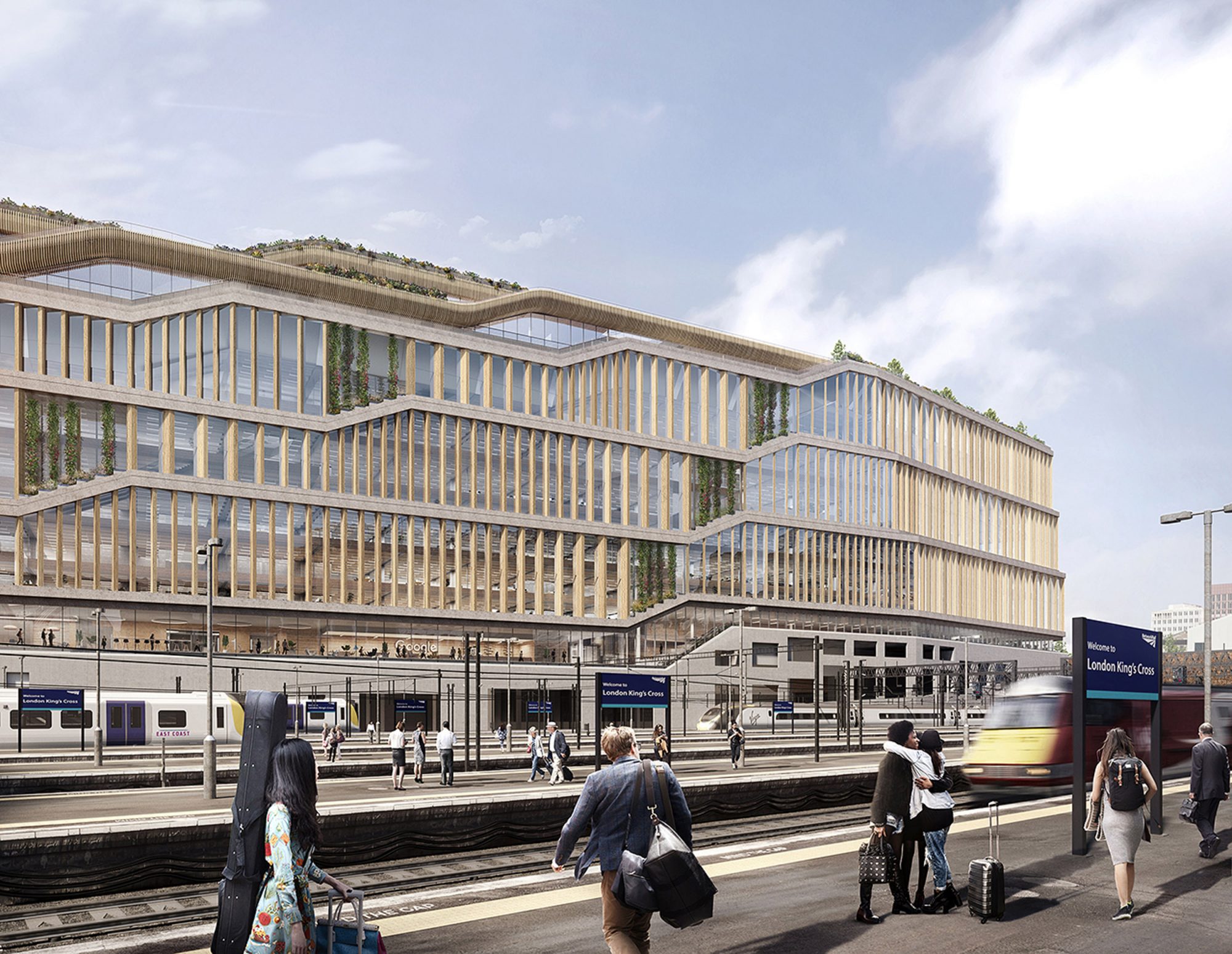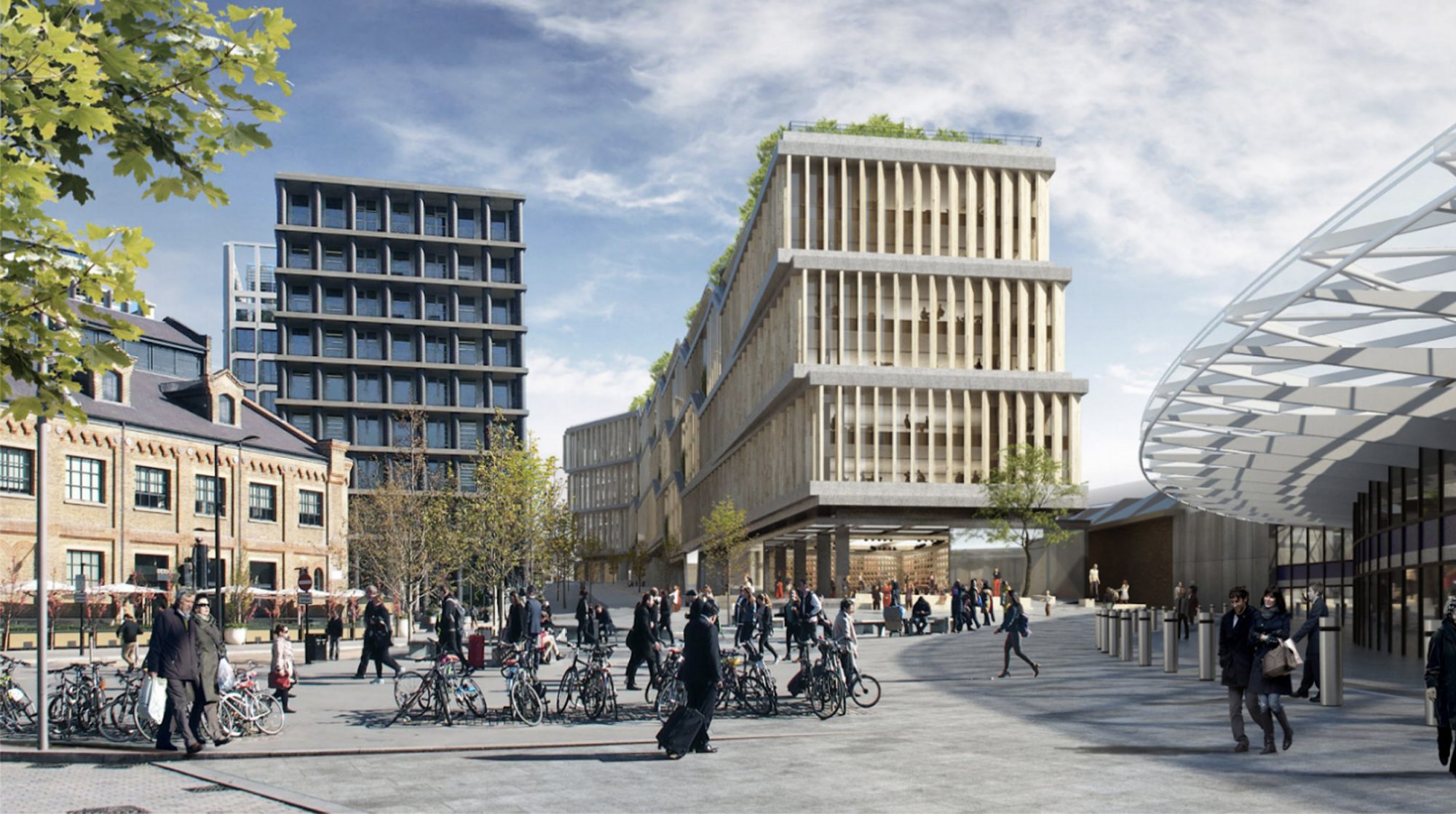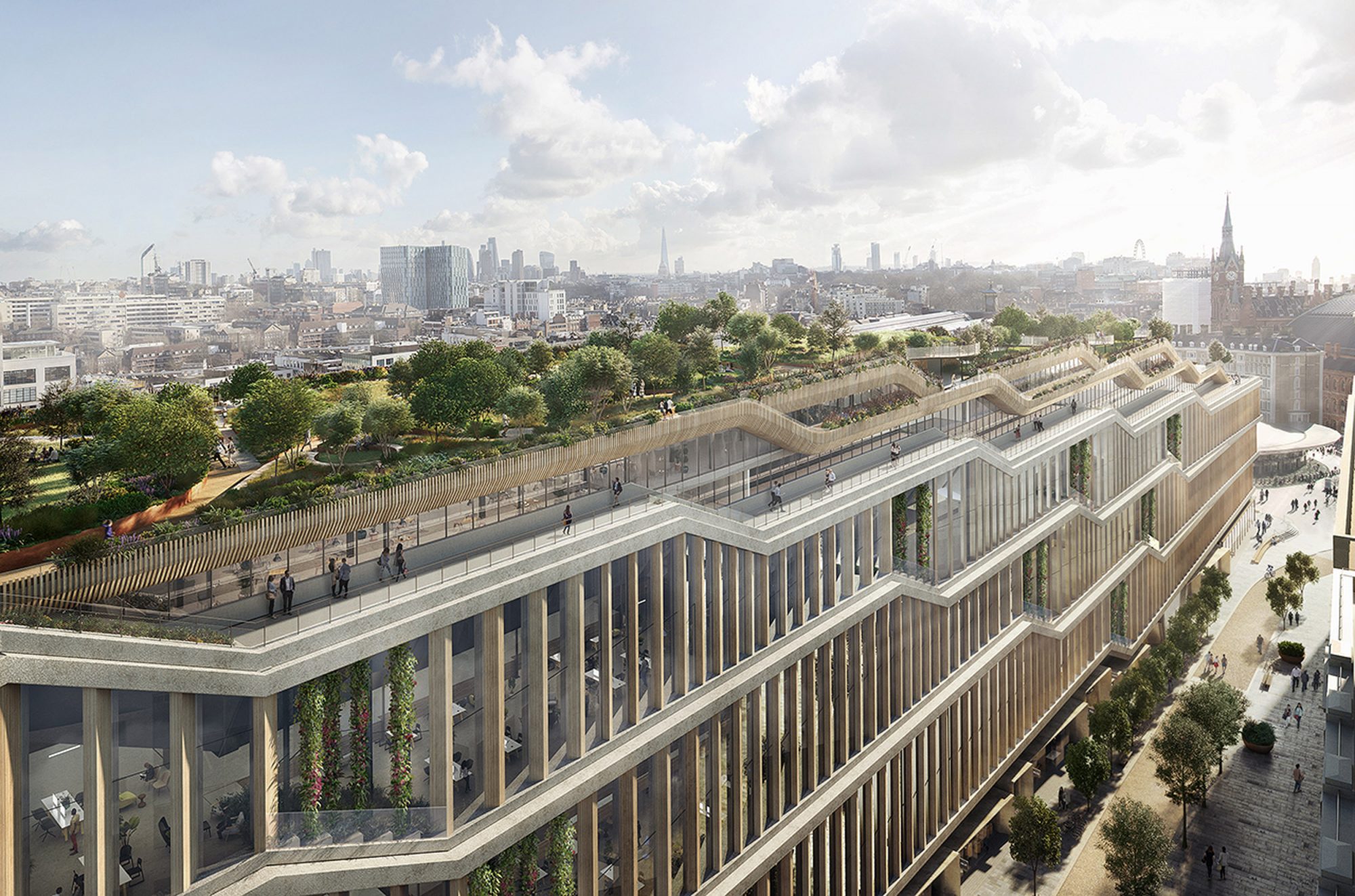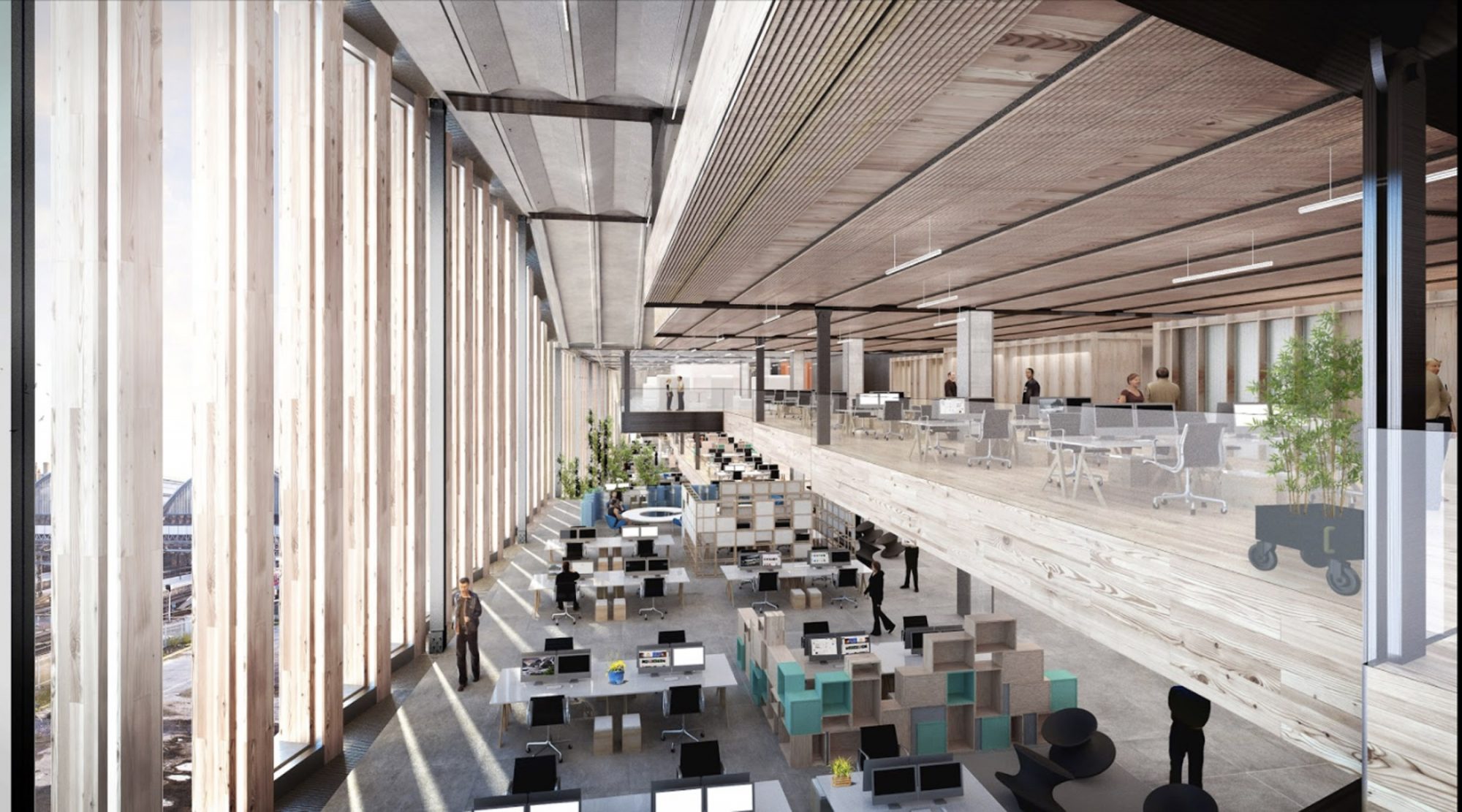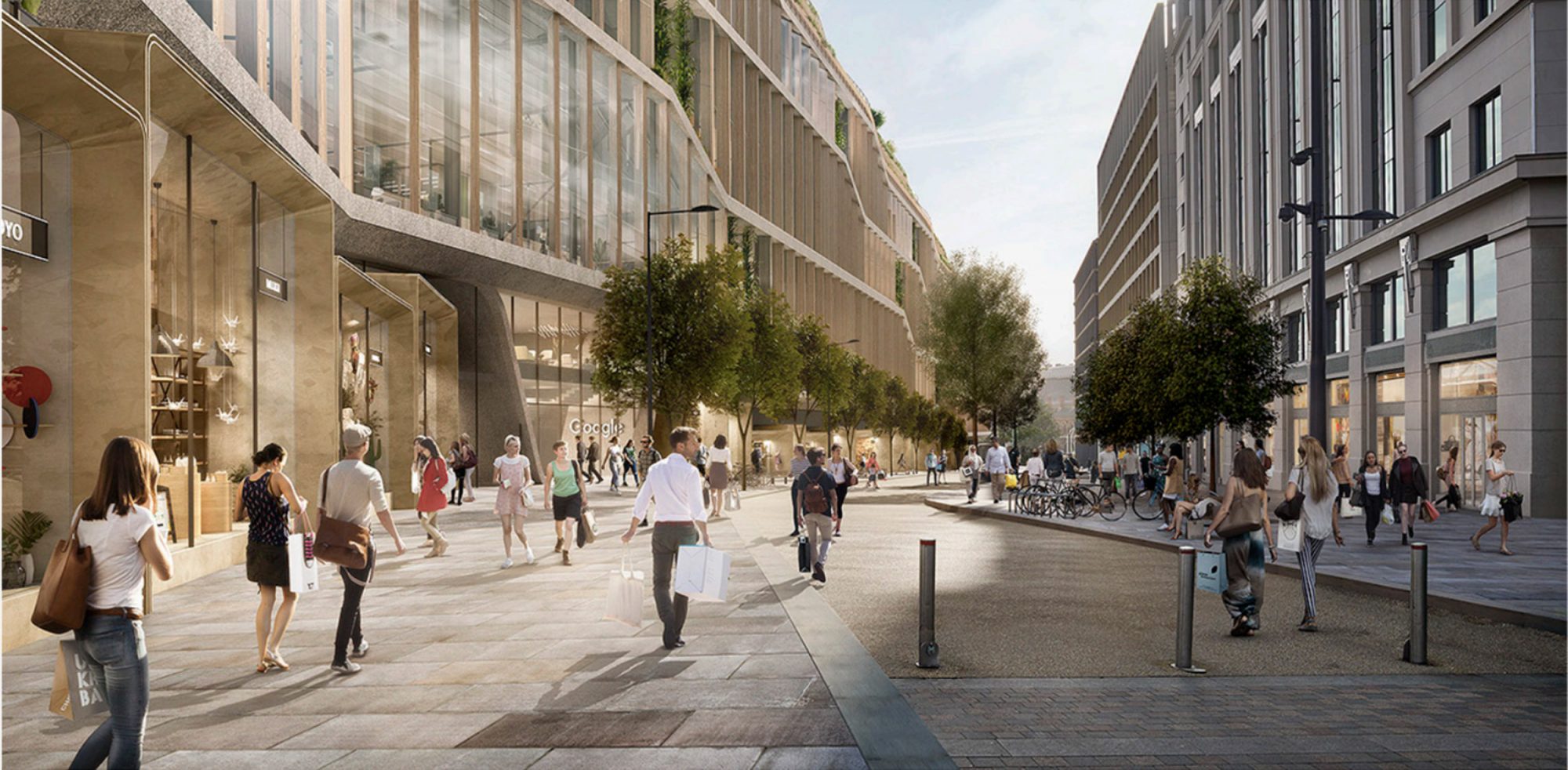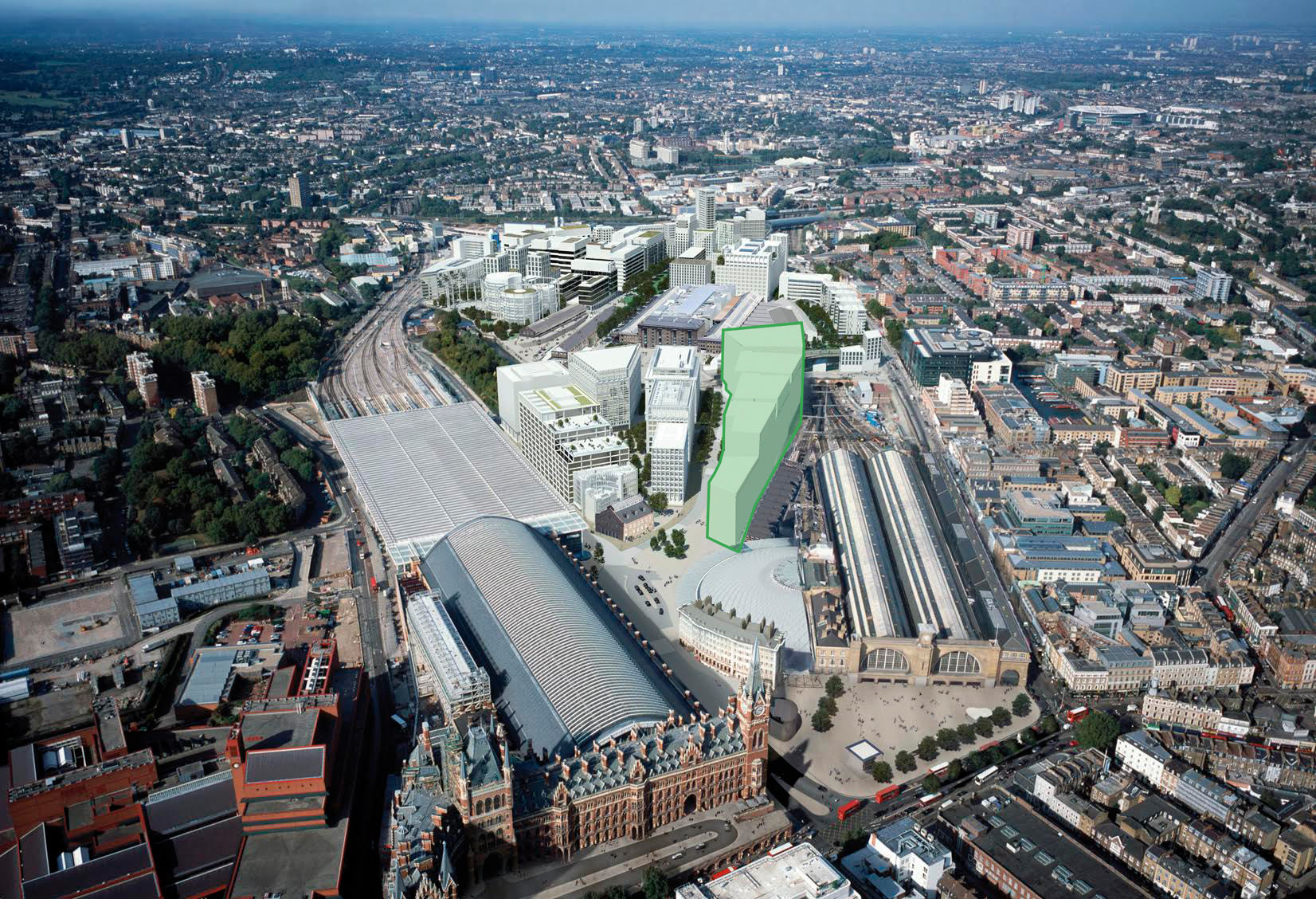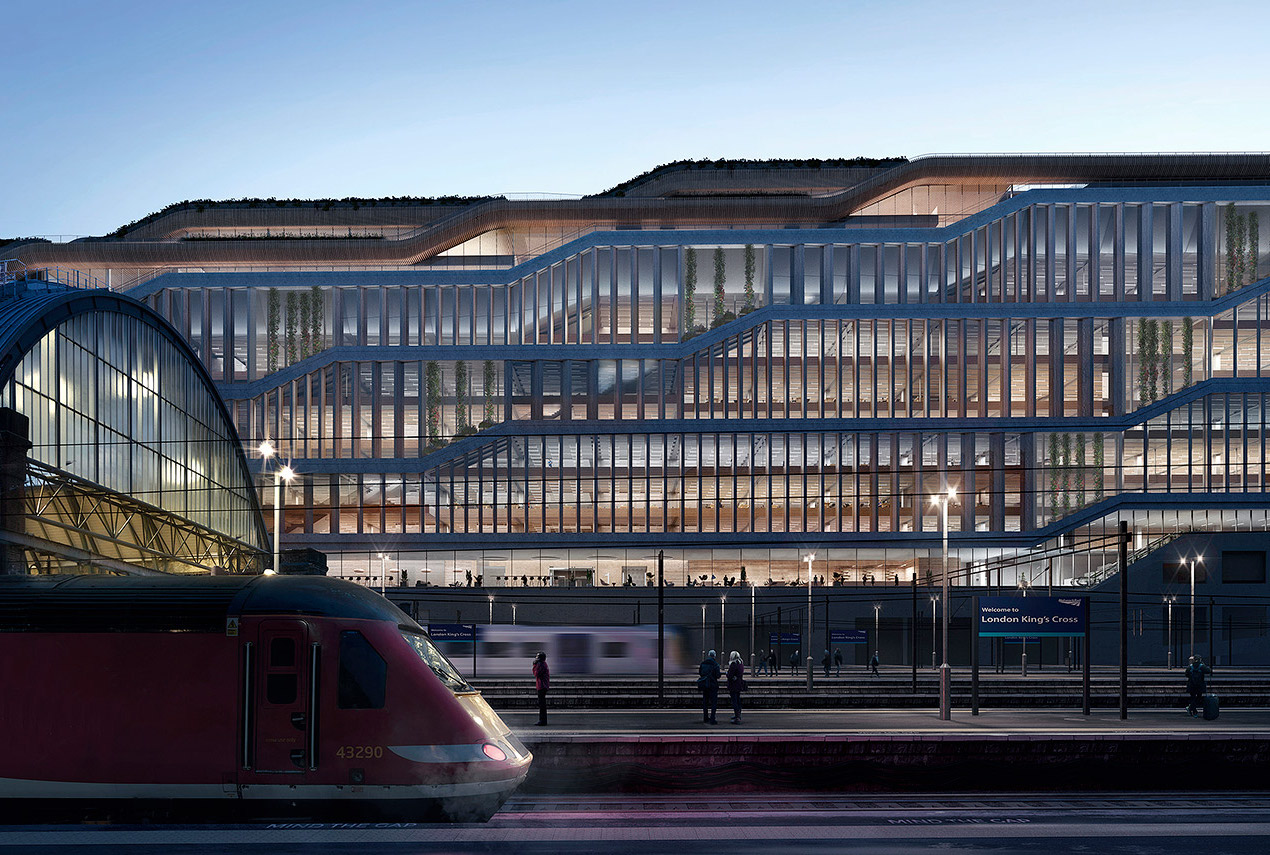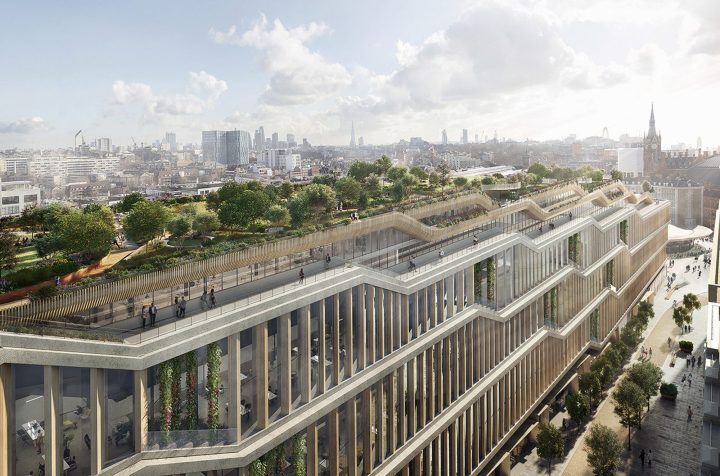
Having finally settled on a striking design that’s become known as the “landscraper” — for being much longer than it is tall — the company’s CFO Ruth Porat and its U.K. managing director Ronan Harris on Tuesday broke ground at the site in the city’s vibrant King’s Cross district.
They were joined by London Mayor Sadiq Khan, who hailed the project as further confirmation of “the capital’s reputation as one of the world’s leading technology hubs.”
Designed by Heatherwick Studio and Bjarke Ingels Group, the campus will be home to 7,000 Google employees when it opens. The 11-story structure will stretch for 330 meters and cover some 100,000 square meters. Google will occupy about 65 percent of the space, with the first floor given over to stores and an open market hall.
Well known for its love of offbeat workspaces, the landscraper will offer Googlers a multi-use games area for a slew of sports activities as well as a three-lane, 25-meter swimming pool. Massage rooms and nap pods will be available, too, should the stresses of London life become too much at any point.

More opportunities to chill out will be available on the roof, where workers will find a lush garden stretching almost the entire length of the building. Workers will be able to lose themselves among wildflowers and woodland plants, or simply kick back and enjoy a drink or bite to eat at its coffee shop.
And yes, the landscraper will have some areas set aside for work, too.
Google has been working on the design of its London office for more than four years. The original plan, which featured an exterior similar to the final design, was dreamed up by British architecture firm Allford Hall Monaghan Morris (AHMM) and was given the go ahead in 2013. But a short while later, Google had second thoughts and asked AHMM to rethink the plan before the two ended their collaboration in 2015. Google ended up settling with Heatherwick Studio and Bjarke Ingels Group, which changed parts of the design according to Google’s requests. Now they just have to build it.
